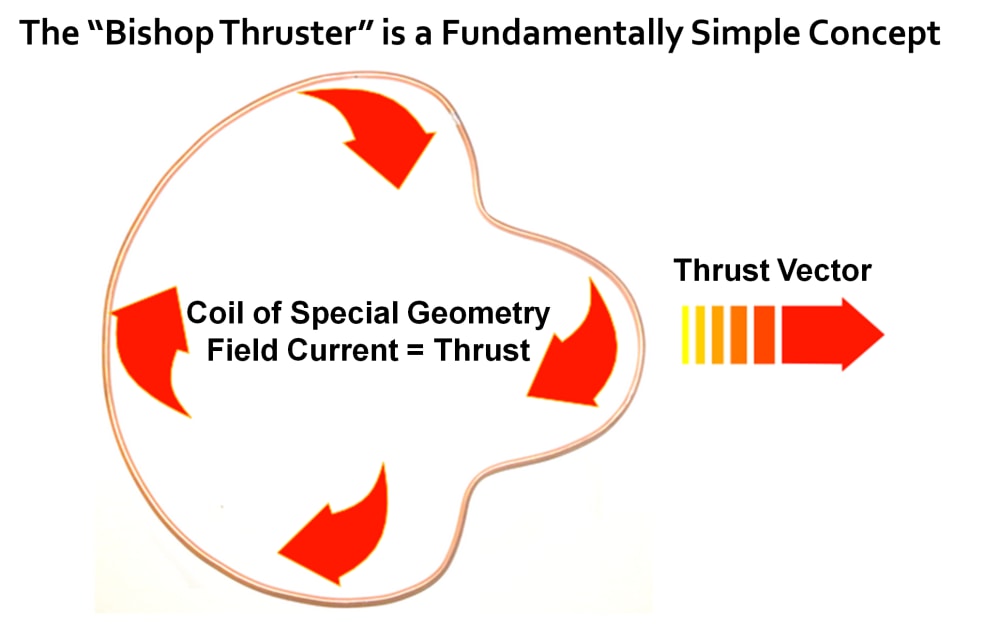Classic Rocket Propulsion may be defined as the application of force that initiates or changes the motion of a rocket based on Newtonian action-reaction principles. This method is primitive, potentially dangerous, and has limited range due to fuel requirements. It is also very slow, far too slow for interstellar travel and barely fast enough for interplanetary travel. In science fiction there emerged the concept of the Warp Drive that uses a warp coil to warp space and allow for faster than light travel. While currently this is only science fiction I propose another type of coil that while not capable of warping space, it could be capable of revolutionizing human space travel. In the Non-Newtonian Electromagnetic Rocket Thruster, or simply the “Bishop Thruster”, there is only directed propulsion. This directed propulsion is the product of the flow of electrical current through the coil of a unique geometry. All existing thrusters require fuel in the form of consumables. The rocket engine conceived by Robert Bishop would require only electrical current flowing through a coil of special geometry, the electrical energy used to produce the current flow could be harvested using many different technologies even in the not so emptiness of space.
The estimate of this force for Q = 10-6 Coulomb, I = 10 A, v » 1 mm/sec in the perfect conductor, R1 = 0.1 meter and R2 = 1 meter gives Ftotal » 10-14 Newtons.
While the output from a single coil winding maybe too weak to be detected by modern measurement devices, calculations suggest that a coil with many windings could produce a usable and scalable thrust vector. In addition to increasing the thrust be increasing the number of windings relating to the coil of a special geometry, placing the coil of special geometry into a powerful magnetic field could increase the mass of the electrons in such a way as to greatly increase the thrust vector. Another possible effect could be the localized stiffening of space in the opposite direction from the thrust vector. Since this is a non-Newtonian thruster, the direction of thrust and the direction of travel are the same. By stiffening space in the wake of the Bishop Thruster an effect similar to a toy boat being propelled by the surface tension induced by a piece of soap in the water at the rear of the toy boat. Since energy requirements are relatively low and the required energy could be harvested during the trip, constant acceleration and deceleration may be possible.
Recently the US government has released videos of identified flying objects. The human race has not yet reached a technological stage to understand the physics behind the behavior of these identified flying objects, much less being able to mimic it. I suggest that the "Bishop Thruster" could be the first step at not only understanding the physics behind these unidentified flying objects, but could be a giant leap towards building craft with similar capabilities. Thank you for reading my work!
Like this entry?
-
About the Entrant
- Name:Robert Bishop
- Type of entry:individual
- Software used for this entry:COMSOL
- Patent status:none

